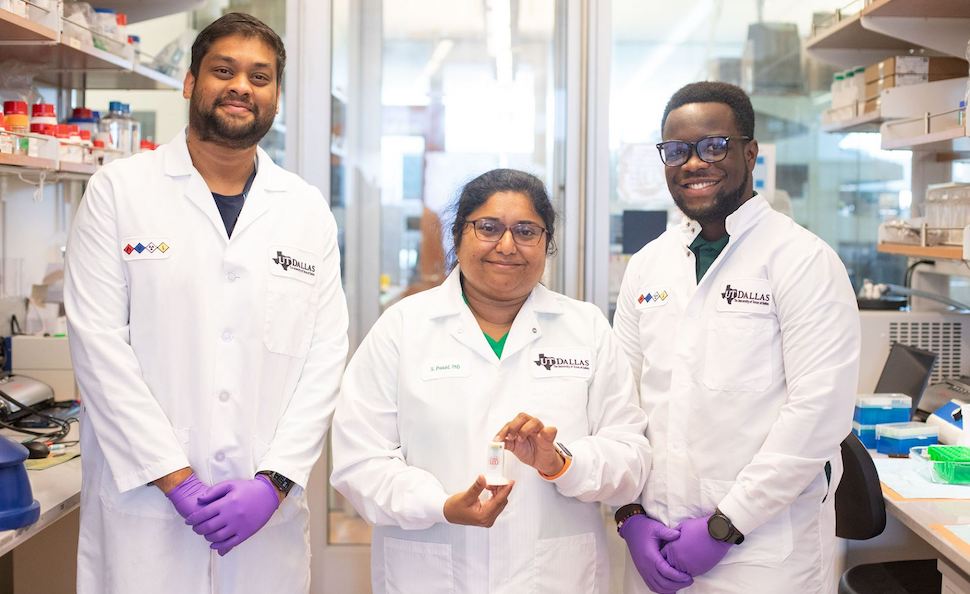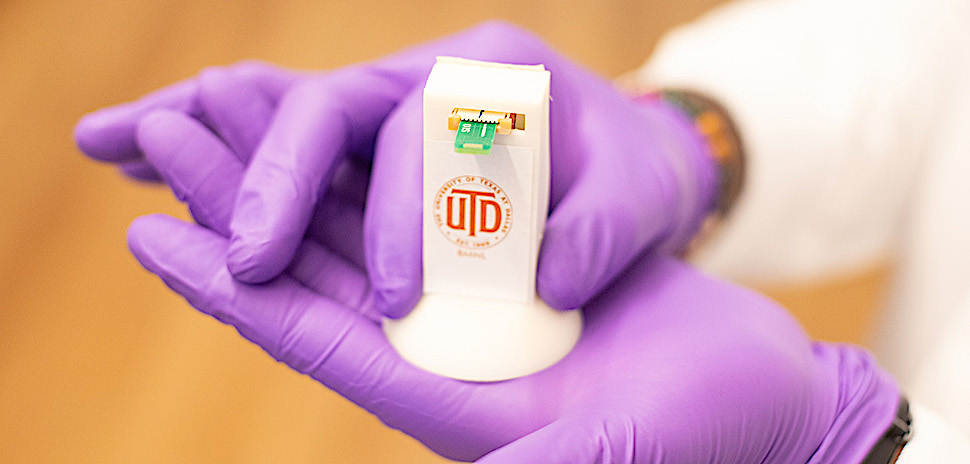Marijuana is fully legal in 23 states and Washington, D.C. Medical marijuana has been legalized in 38 states, including Texas. And in all 50 states in America, guess what people are using? Marijuana, also known as cannabis.
While debates continue about the drug’s benefits and dangers, one thing is certain: Smoking or eating THC—the component in cannabis that makes people feel high—can cause impairment when driving or operating machinery. So how can law enforcement or users themselves test to see whether and how much THC has been consumed?
A team of UT Dallas bioengineers have developed a solution—a hand-held rapid saliva test they say can measure THC levels with 94% accuracy.
Called CannibiSenS, the device can distinguish between THC and CBD, “a component of the cannabis plant that doesn’t cause a psychoactive effect and is sold legally in dietary substances, creams, and other products in most states,” UTD said in a news release.
Dr. Shalini Prasad, a professor and department head of bioengineering at UTD, says the sensor could be used in two key ways: as a tool for law enforcement officers to test drivers believed to be impaired and as a way for medical marijuana practitioners, patients, and recreational users to monitor their own THC levels.
Joined by her colleagues, Prasad—a Cecil H. and Ida Green Professor in Systems Biology Science in the Erik Jonsson School of Engineering and Computer Science—published a study on the technology online on May 24 and in the July 7 print edition of the journal Analyst.

The UTD research team: Vikram Narayanan Dhamu, Dr. Shalini Prasad, and Nathan Kodjo Mintah Churcher. [Photo: UTD]
“The CannibiSenS device has demonstrated the potential for serving the cannabis community in a manner akin to how glucose monitors help the diabetic community,” Prasad said in a statement. “Ultimately the goal is to provide actionable data with a simple, mess-free method.”
The device was developed in collaboration with a company Prasad co-founded: Allen-based EnLiSense, which develops lifestyle-based sensors and devices. Previously, Prasad and her teams developed similar technology for a wearable sweat sensor that detects key biomarkers of infection, a potential step toward making it possible for users to receive early warnings of infections such as COVID-19 and influenza.
How the device works
Using the device involves taking a saliva sample by swabbing inside the cheek, UTD said. The sample can be placed onto the sensor by gently dabbing the swab onto the sensor surface or by using a dropper if the sample was collected earlier. The team says the “electrochemical sensor” is more sensitive than over-the-counter tests, which typically can detect THC but don’t determine its concentration.
Why is the level of concentration so important? Prasad notes that detectable amounts of THC can remain in a marijuana user’s bloodstream for days after use, “creating the potential for false positives in a roadside test.” She said her team’s sensor is also able to distinguish between THC and CBD, further reducing the chance of false positives.
Researchers tested the device’s capability in a real field-test scenario by collecting saliva samples from five people. They then spiked the samples with THC before testing the samples with the device. It was accurate 94% of the time, the team says.
Getting the right dosage for medical marijuana
For medical marijuana practitioners and patients, the sensor could help determine the most effective dose, the team added.
“Our saliva test will tell you what the THC level is, which in medical cases can help determine an optimal dosing level,” Prasad said. “Patients could use the test to manage their doses and make adjustments when needed.”
According to the Centers for Disease Control and Prevention, marijuana is the most used federally illegal drug in the U.S., and affects parts of the brain responsible for memory, learning, attention, decision-making, coordination, emotion and reaction time.
It can also be hard to know just how much THC one is smoking or consuming. (All gummies are definitely not created equal, for instances.) The UTD team noted that there is no universal threshold for the amount of THC that causes impairment, and said that THC can be difficult for users to monitor, since marijuana potency can vary a lot.
Many states that have legalized marijuana, however, have set the drug’s threshold at 5 nanograms per milliliter.
The UTD team’s research follows a 2019 UTD proof of concept study that led to interest in the device. Prasad, who directs UTD’s Biomedical Microdevices and Nanotechnology Laboratory, has also worked with her team of researchers to develop sensor technologies that can detect molecules associated with various conditions, including diabetes, inflammatory bowel disease, and sepsis.
In addition to senior author Prasad, the Analyst study’s other contributors are biomedical engineering doctoral student Nathan Kodjo Mintah Churcher BS’19, a Eugene McDermott Graduate Fellow and National Science Foundation Louis Stokes Alliances for Minority Participation (LSAMP) Bridge to the Doctorate awardee; and former bioengineering research assistant Vikram Narayanan Dhamu PhD’23.
![]()
Get on the list.
Dallas Innovates, every day.
Sign up to keep your eye on what’s new and next in Dallas-Fort Worth, every day.


































































